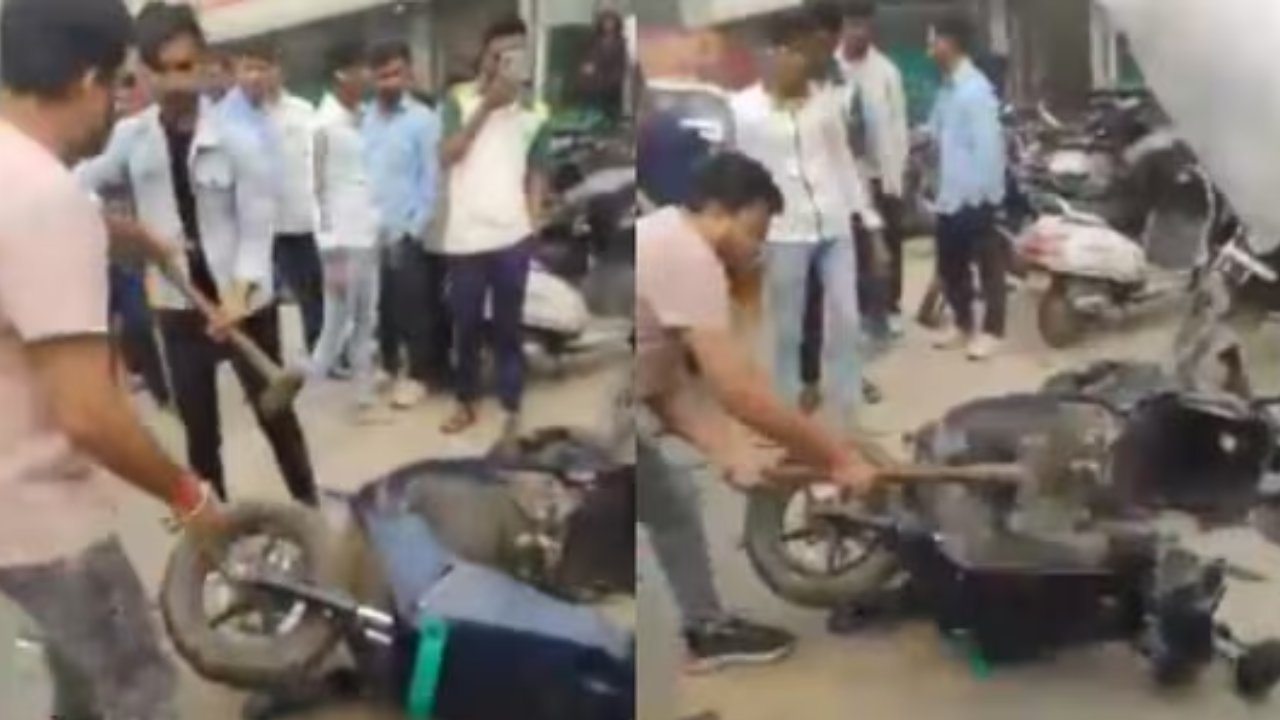 |
|
The recent incident involving a customer violently destroying his Ola Electric scooter with a hammer after receiving a ₹90,000 invoice has brought the company's customer service practices under intense scrutiny. The video, which quickly went viral on social media, depicts the raw frustration of a customer who felt unjustly charged for repairs or services. The act itself, while extreme, underscores a deeper issue of customer dissatisfaction with Ola Electric's handling of after-sales service and billing transparency. The incident raises critical questions about the company's internal processes, its communication with customers, and the potential need for improved conflict resolution mechanisms. The sheer magnitude of the invoice – ₹90,000 – further amplifies the customer’s grievance, suggesting a possible breakdown in the expected cost versus the actual billing. This incident isn't an isolated case, hinting at a broader pattern of customer dissatisfaction.
The incident has ignited a wider public conversation about Ola Electric's customer service. Comedian Kunal Kamra, known for his outspoken views, added fuel to the fire by publicly criticizing the company's alleged poor after-sales service. Kamra shared an image depicting numerous scooters at an Ola service center, visually highlighting what he perceived as a lack of adequate support for customers. His criticism extended to a concern for Indian consumers, particularly those who depend on two-wheelers for their livelihoods, questioning whether they have a voice and deserve such treatment. Kamra's intervention transformed the issue from a single customer complaint into a larger societal discussion about corporate responsibility and consumer rights in India. This broadened the scope of the criticism, moving beyond individual customer experience to a wider debate on consumer protection and corporate accountability.
Ola Electric's CEO, Bhavish Aggarwal, responded to Kamra's criticism with a sharp retort, suggesting that Kamra’s tweet was a paid promotion. This response, rather than addressing the underlying customer service issues, fueled further criticism, as it appeared to deflect responsibility and disregard valid concerns. Aggarwal's insistence that Ola was rapidly expanding its service network and resolving backlogs did little to quell the growing public anger. The exchange between Kamra and Aggarwal highlighted a significant communication breakdown between the company and its customers, further illustrating the need for improved transparency and customer-centric approaches. The controversy also attracted the attention of industrialist Harsh Goenka, who offered a lighthearted yet subtly pointed commentary, demonstrating the widespread awareness and interest in the unfolding situation. The conflicting narratives—the customer’s frustration, Kamra’s criticism, and Aggarwal's defense— highlight a multifaceted problem that extends beyond a single angry customer and a damaged scooter.
The incident underscores several crucial issues in the burgeoning electric vehicle market in India. Firstly, it points to the challenges of scaling up after-sales service to meet the growing demand. The rapid expansion of electric vehicle companies often struggles to keep pace with the need for adequate service infrastructure and trained technicians. Secondly, the incident highlights the importance of clear and transparent billing practices. Customers need to understand the costs involved in repairs and maintenance before they are incurred to avoid unexpected financial burdens. Thirdly, the controversy illustrates the critical role of effective communication in managing customer expectations and resolving conflicts. A prompt, empathetic response from the company could have potentially de-escalated the situation before it reached such a dramatic conclusion. The lack of effective communication only served to exacerbate the issue and damage Ola Electric's reputation.
The long-term implications for Ola Electric are significant. The negative publicity surrounding this incident could impact its brand image and potentially affect sales. The company needs to take proactive steps to address the underlying issues causing customer dissatisfaction. This includes improving its service network, enhancing its billing transparency, and investing in robust customer service training. Furthermore, Ola Electric must learn from this incident and implement effective mechanisms for resolving customer complaints promptly and fairly. The company's response to this crisis will be a critical indicator of its commitment to customer satisfaction and its long-term sustainability in the competitive electric vehicle market. The damaged scooter serves as a stark symbol of a larger problem that needs immediate attention.
Source: Electric Customer Thrashes Scooter With Hammer After Receiving ₹90,000 Invoice
